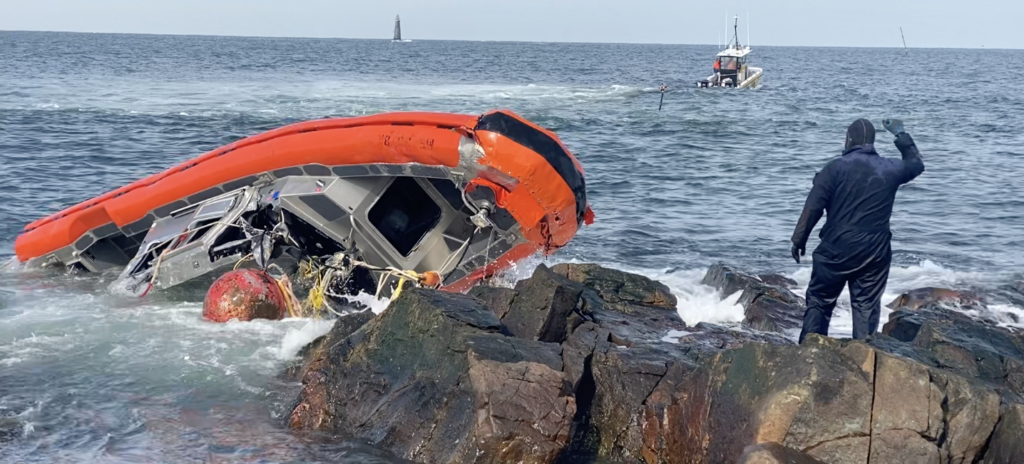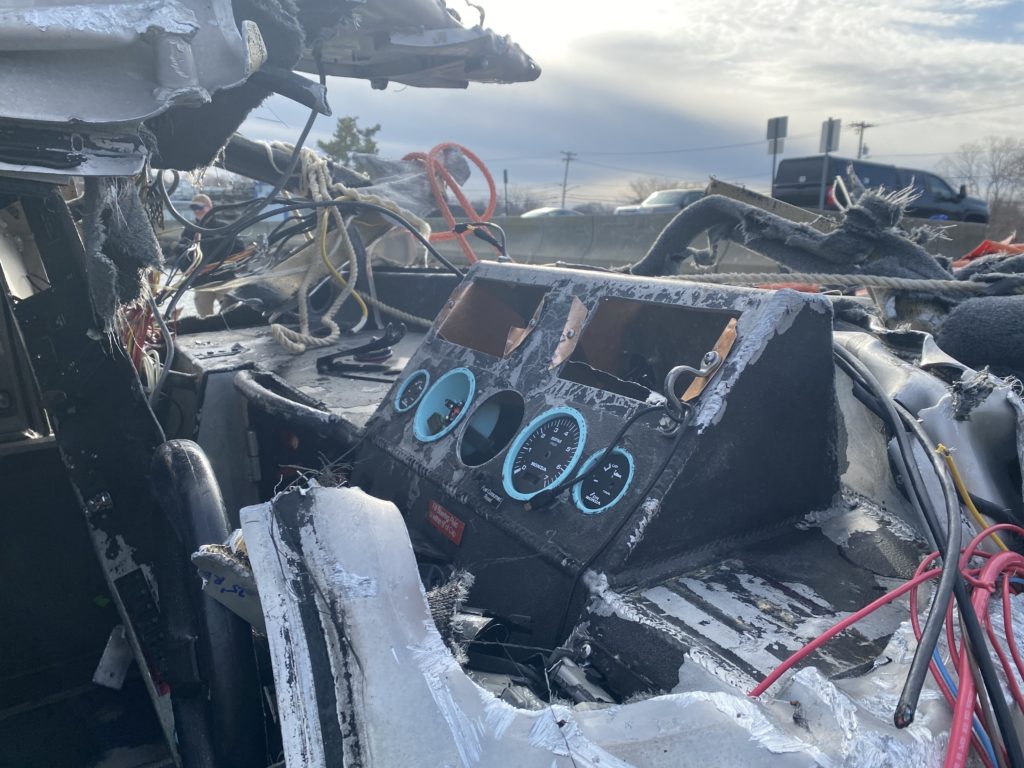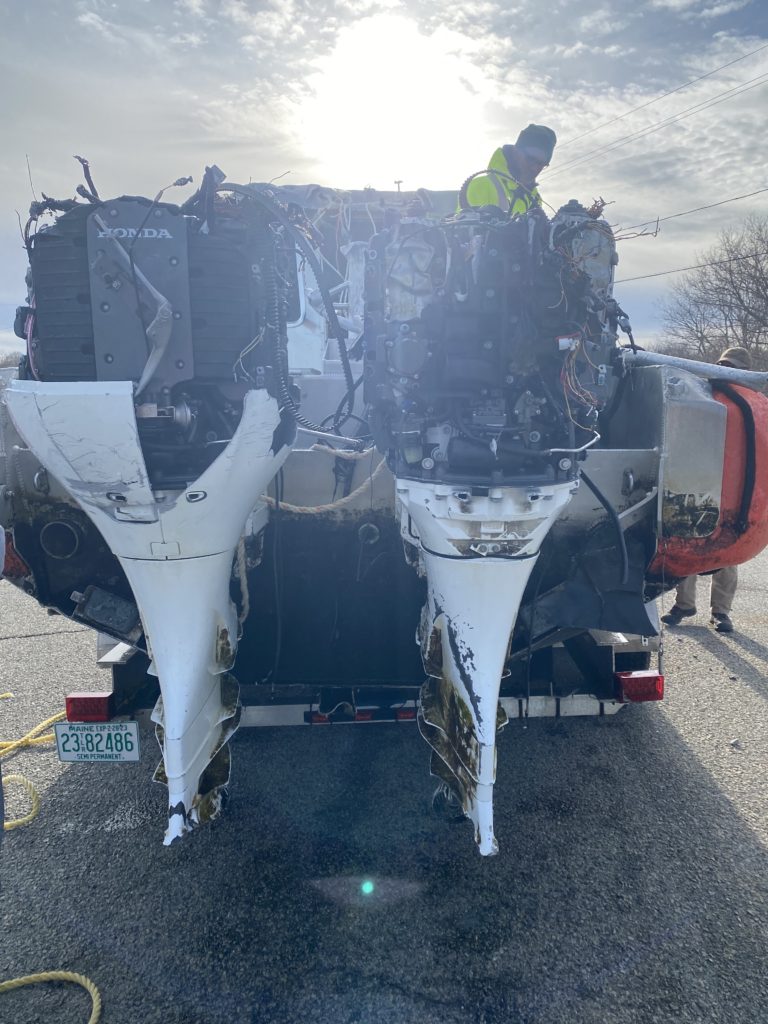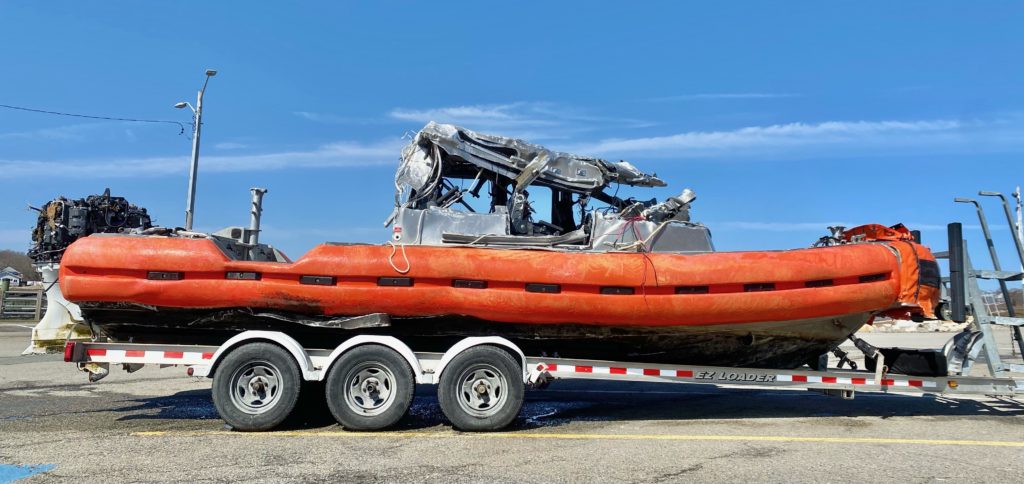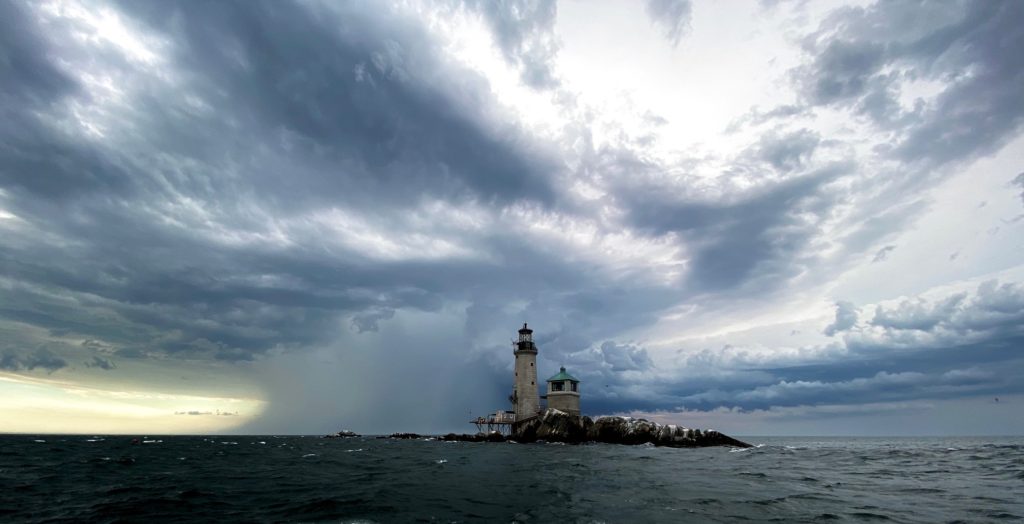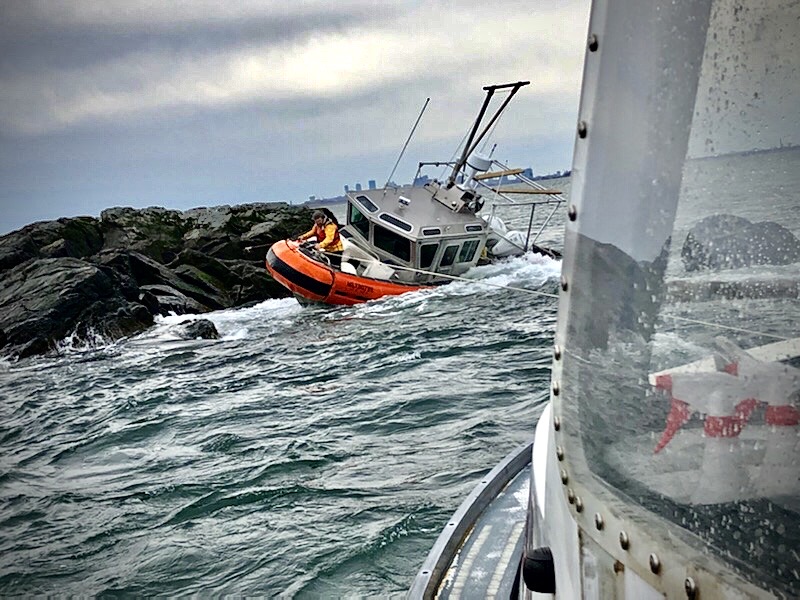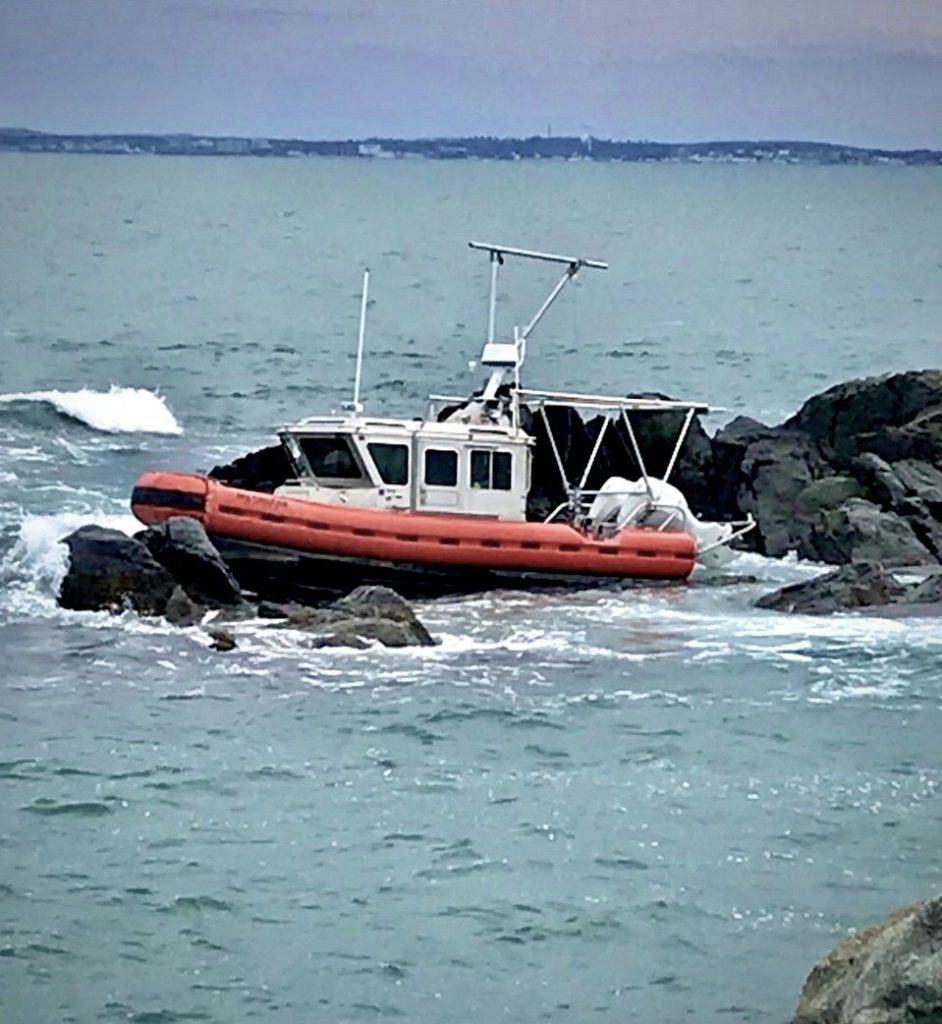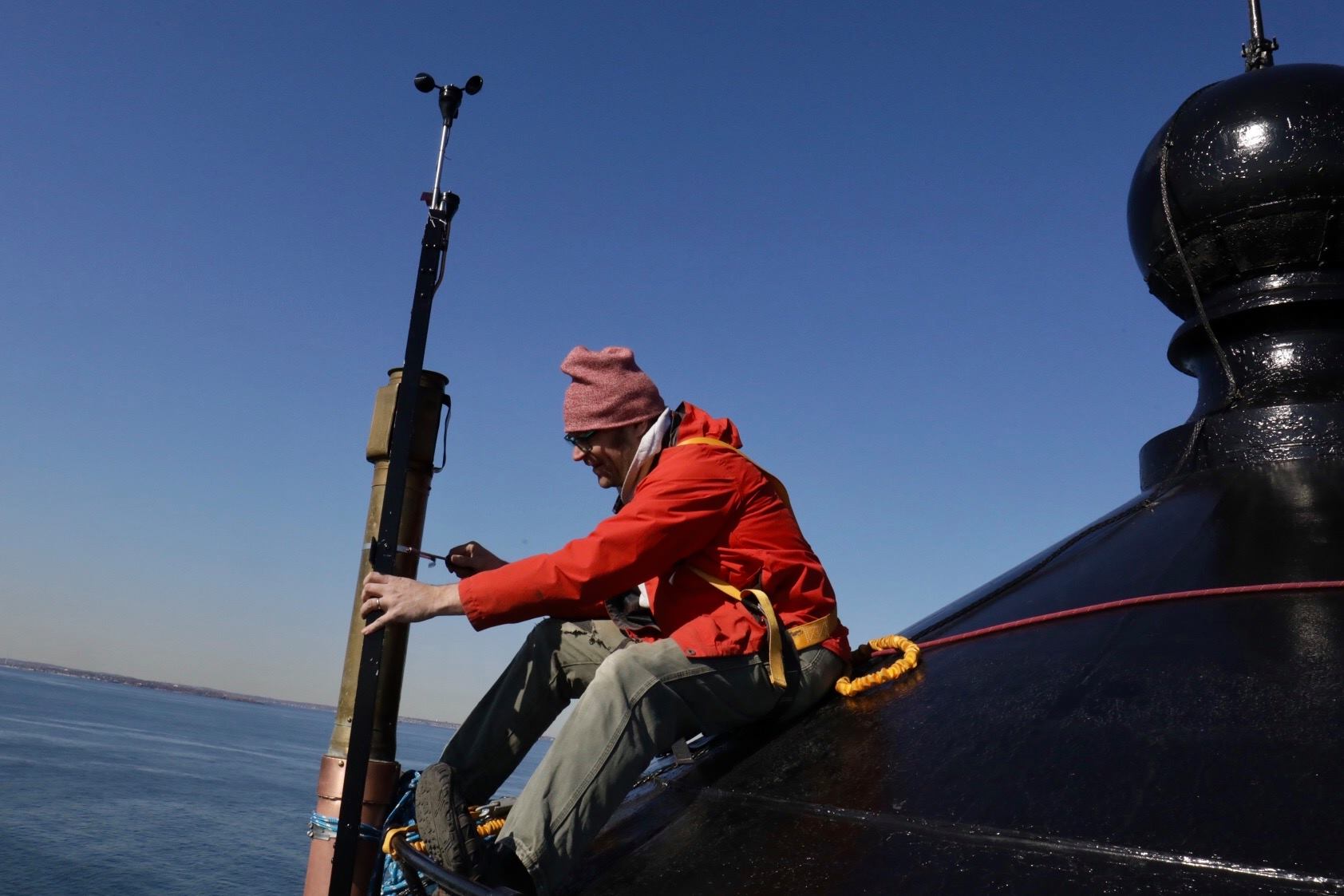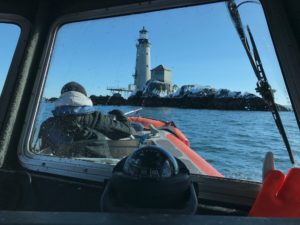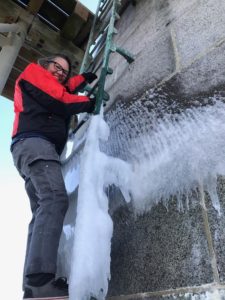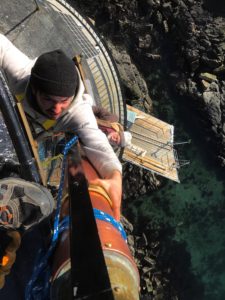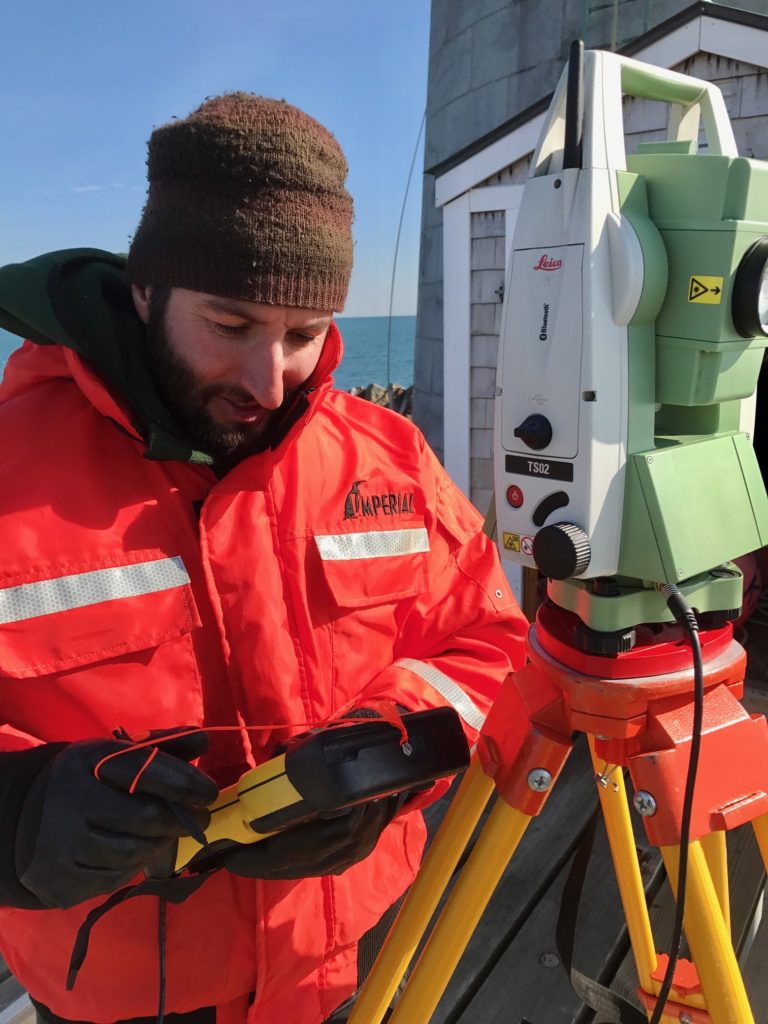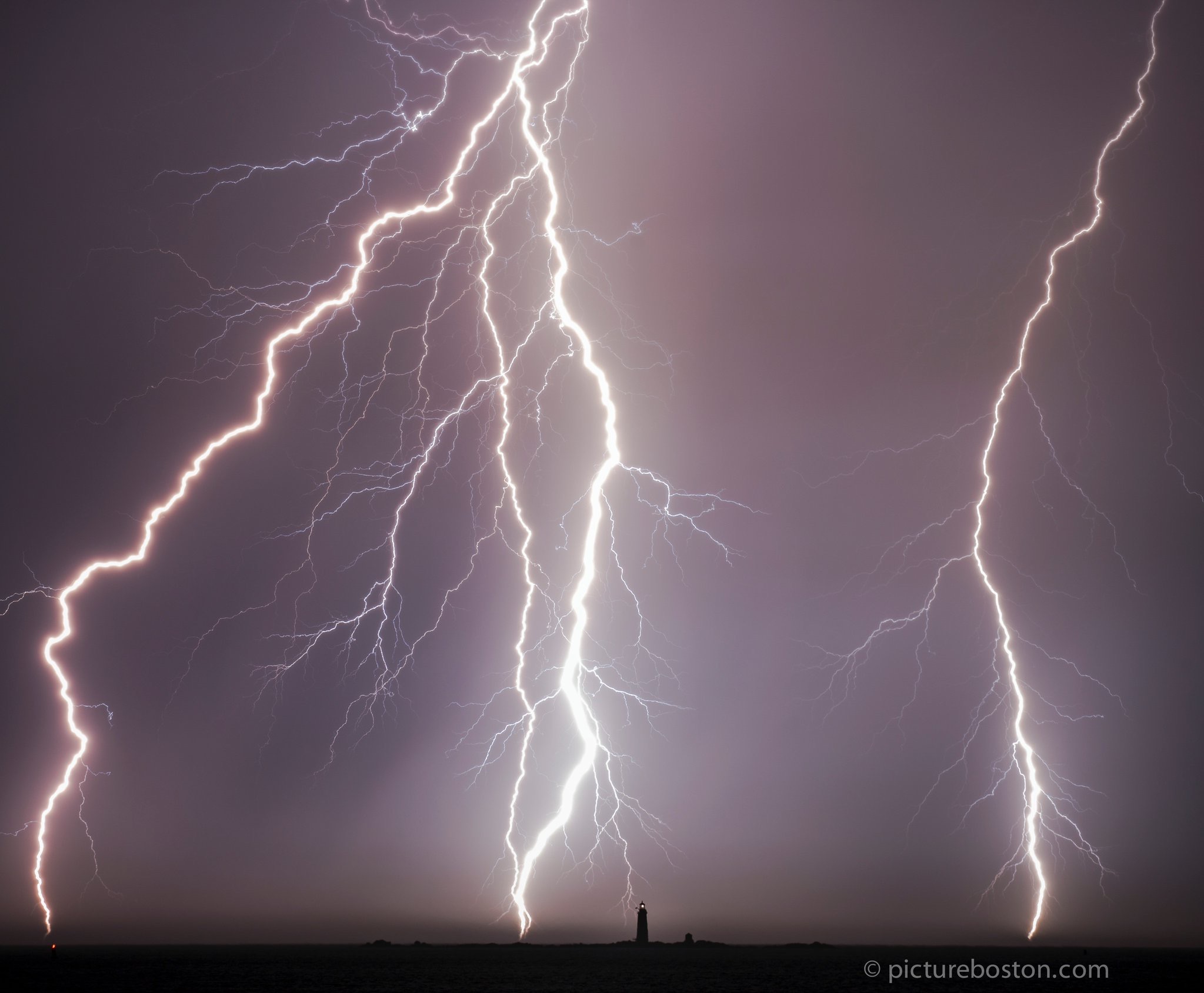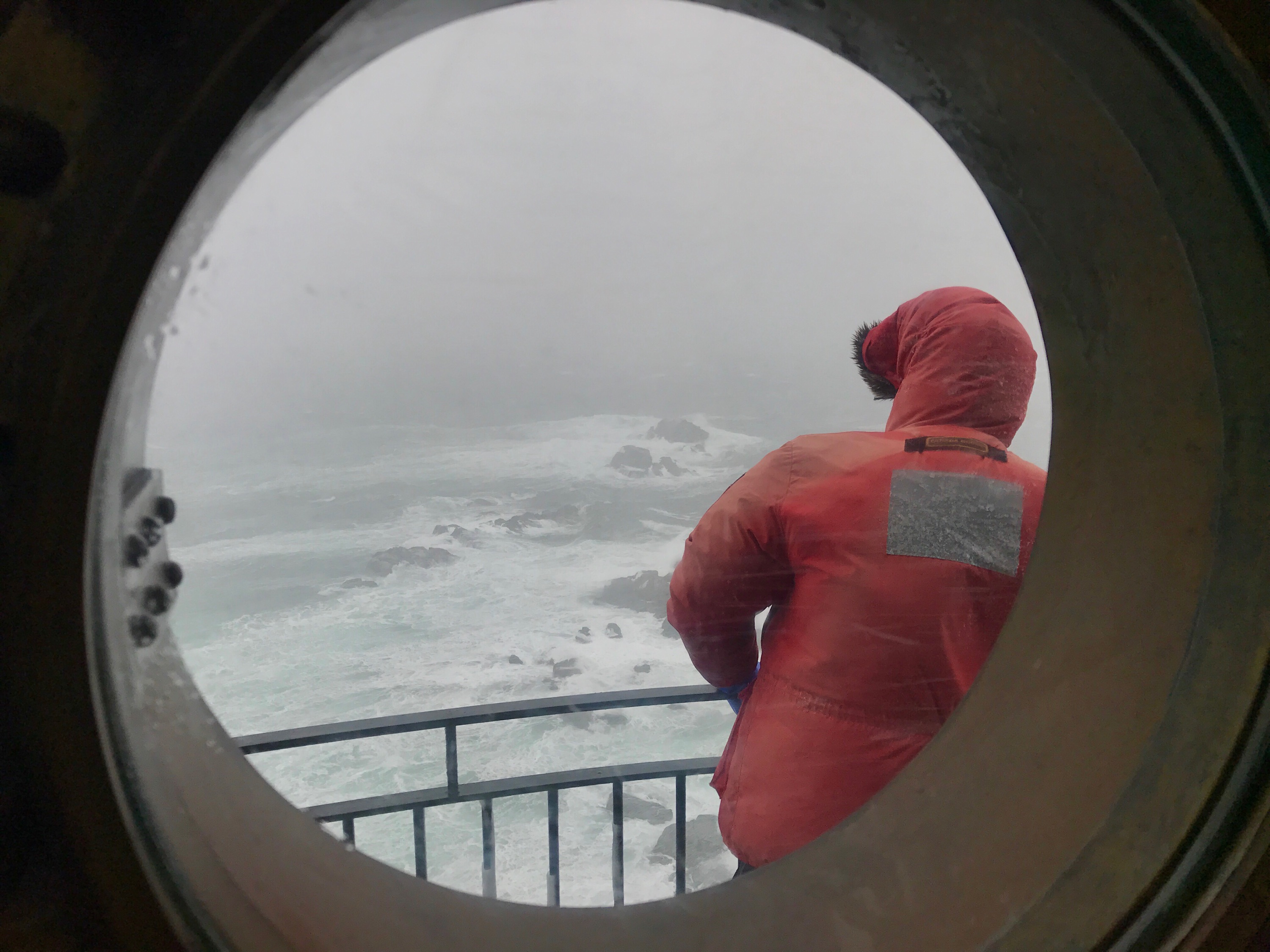
Safest place in the harbor, 100 feet up.
We finally got to spend stay in the lighthouse during a winter nor’easter.
The storm, Stella, was pretty tame, as it turned out, but with some good preparation and common sense we had a fine time.
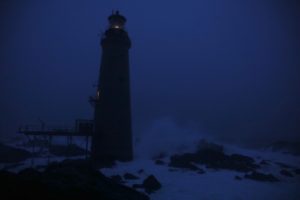
Graves at night during Winter Storm Stella.
Cap’n Pat of the Keep-ah joined us just before the storm, when the seas were still calm.
We were well-equipped. Plenty of bacon and beans. Lots of spirits to drink. Wood and coal for the potbelly stove. An electric generator plus solar panels and good communications to shore.
Plus lots of work to do.
For us, it was a normal winter trip. Basic maintenance, wood finishing work, attachment of bronze window hardware, and stuff. It was good to be in the lighthouse during a solid rain so that we could find where the windows leaked, and seal them up.
Earlier, Keeper Dave installed an anemometer on the chimney so we could get real-time wind speed.
We didn’t realize so many people were following us on Facebook, and didn’t think to take a lot of pictures or send messages. Here are some of our Facebook postings during the storm:
- March 14, 2017. 4:28 pm: It’s a dangerous place to go to but it’s a very safe place to be.
- March 14, 10:42 pm: The waning hours of the nor’easter Stella. Dead low tide opened a window to crawl across the ledge with safety lines and dry suits to witness the heavy surf. The wind and rain have calmed, but it’s still an amazing, wild and exciting place.
- March 15, 6:42 pm: Yesterday we didn’t do anything productive. Just watched the storm all day and then went exploring on the ledge at dusk (and low tide) in our dry suits. We brought a few lengths of line in case somebody slipped. No one did!
-

Cap’n Pat catches up on his history of New England shipwrecks as the bacon and beans bubble on the potbelly stove.
Today we slept late because the sleeping bags are so warm! Did a bunch of chores today – put the paneled ceiling back up after running some plumbing and electrical lines, put on some cabinet knobs, ran a cold water line up the six stories. (See the exciting pictures.) Now I’m installing an improved method of securing the storm shutters. The ribs are going on the stove in an hour!
- March 15, evening: Cap’n Pat of the Keep-ah took care of all the food. Tonight it’s ribs and baked beans on the wood-fueled potbelly stove. We’re mostly burning wood as we haven’t figured out the secret to getting the coal fire hot enough.
- For those of you kind enough to worry about us, we’ve got a propane heater for the kitchen. It’s well ventilated because the room was designed to allow outside air in thru snorkel vents.
- Pat’s streaming some great Pandora feeds – we found one of the old Nova Scotia sea shanties.
- What REAL lighthouse work is like: Cap’n Pat splices an old length to a genuine US Lighthouse Establishment (USLHE) pulley block, so we can hang the oil lamp in the kitchen. The lantern is repurposed from a USLHE dock lantern.
- Pat did a fine job, of course. The lantern fits right in beneath the First Order Fresnel Lens that forms our kitchen ceiling, right below the operating Coast Guard navigation lamp.
-
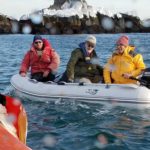
-
We arrived safely while seas were still calm.
-

-
Safest place in the harbor, 100 feet up.
-
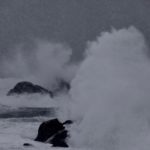
-
Seas were about 10 feet, max. Spray sometimes went up to the second level window.
-
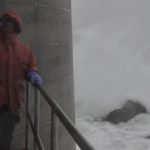
-
We didn’t venture out much during the storm.
-
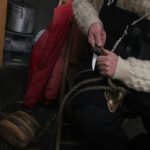
-
Cap’n Pat splices line to hang a lamp.
-
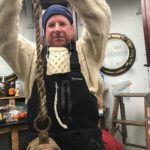
-
Pat attached the spliced line to an antique US Lighthouse Service block.
-

-
Then we hung the lantern beneath the actual navigation lamp.
-
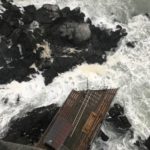
-
Meanwhile, it was still choppy down below.
-
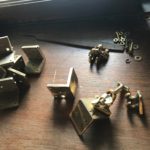
-
We installed some custom made bronze fittings.
-
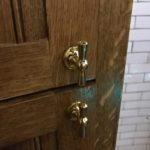
-
Put bronze latches in the oak kitchen doors.
-
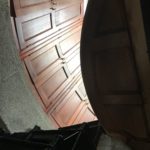
-
Looking up at the curved kitchen cabinets.
-
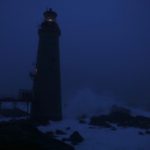
-
Graves at night during Winter Storm Stella.
-
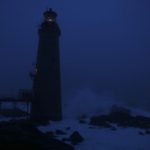
-
We got into dry suits with safety lines and clambered over the rocks for this picture.
-

-
Quiet and peaceful winter night.
-
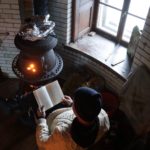
-
Cap’n Pat catches up on his history of New England shipwrecks as the bacon and beans bubble on the potbelly stove.
-
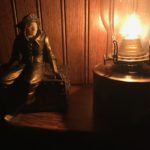
-
Gramps’ bronze pirate gazes at the oil lamp.
